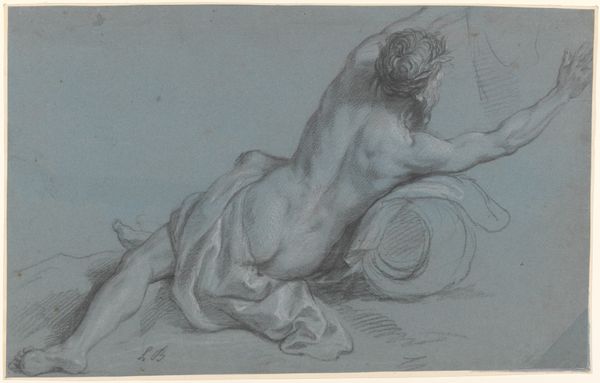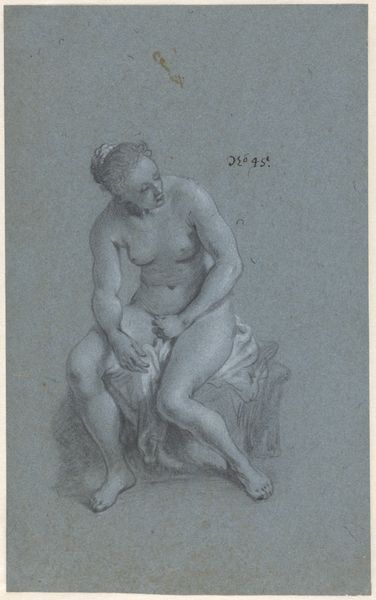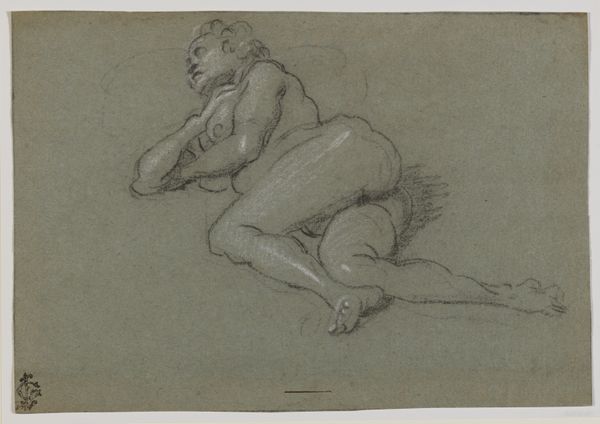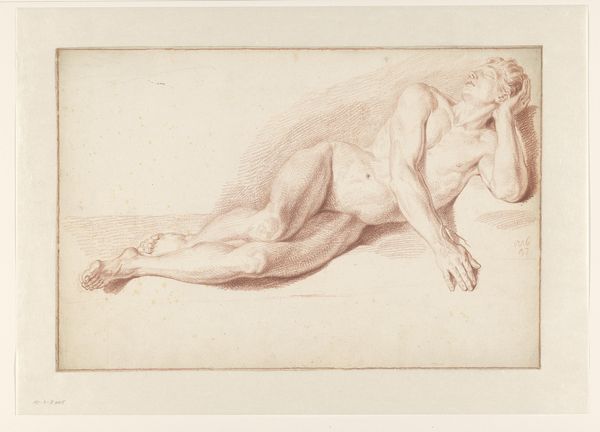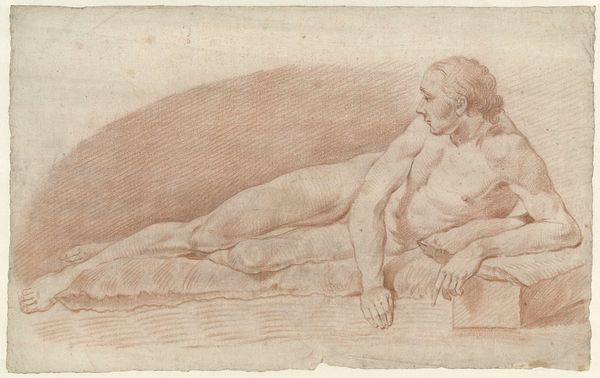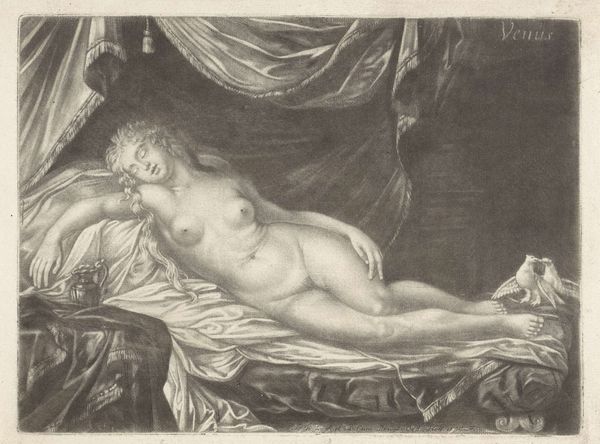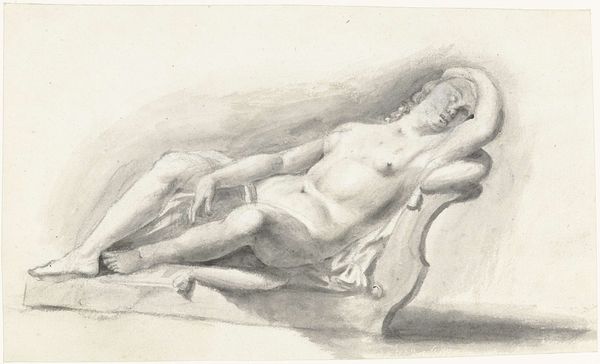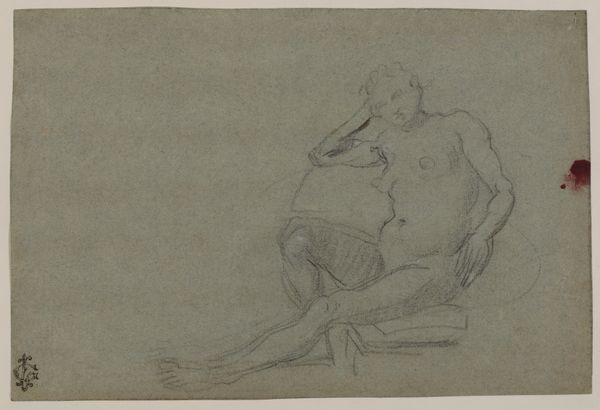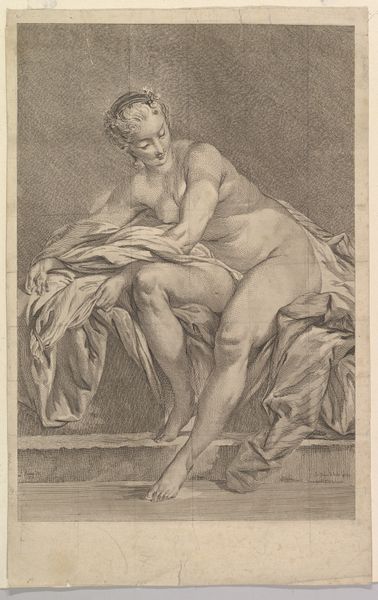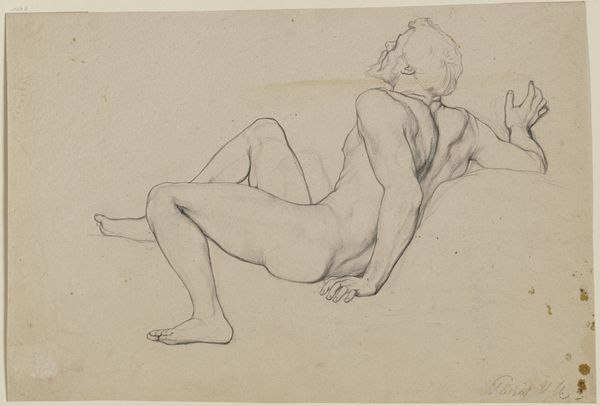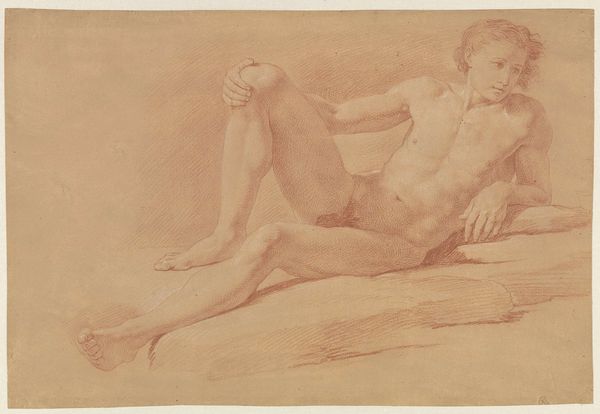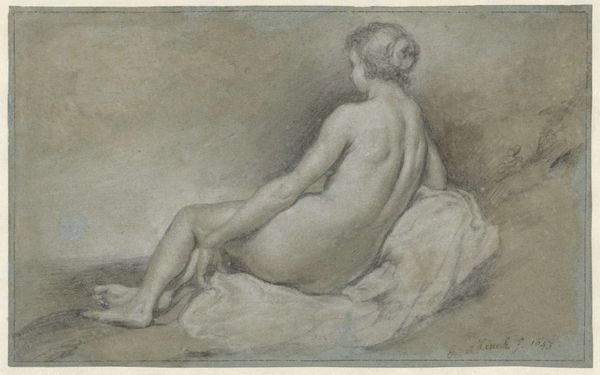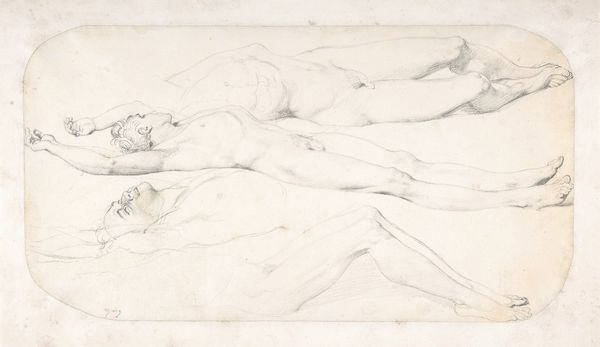
drawing, print, charcoal
#
portrait
#
drawing
# print
#
charcoal drawing
#
figuration
#
11_renaissance
#
portrait reference
#
female-nude
#
charcoal
#
history-painting
#
academic-art
#
realism
Dimensions: 10-11/16 x 16-1/8 in. (27.1 x 41.0 cm)
Copyright: Public Domain
Editor: This is Govert Flinck’s “Reclining Female Nude,” created sometime between 1625 and 1660 using charcoal. The monochromatic palette gives it a very classical feel, almost like a sculpture. What do you see in this piece, especially considering the context it was made in? Curator: It's fascinating how Flinck’s nude study engages with the conventions of his time, particularly within the context of Dutch Golden Age art. While portraiture and genre scenes thrived, the nude held a more complex position. This drawing exists as an academic study, most likely intended as preparation for history paintings where mythological or allegorical figures might appear. We must consider the role institutions, like art academies, played in shaping artistic practice and subject matter. The nude, although less publicly celebrated than in other European traditions, still served a crucial function in artistic training. Editor: So, it's a nude but not exactly *for* display, more like a behind-the-scenes look? Curator: Precisely. It reflects the tension between the didactic purpose of art education and public consumption. Think of it as a window into the artistic process. Did Flinck exhibit drawings like this publicly, or were they mainly circulated amongst artists and students? That is a question that speaks to the status of art, as commodity and cultural artifact, at the time. Editor: I see. It shifts my understanding of the piece. Knowing its potential purpose within a larger historical or mythological context almost legitimizes the intimate portrayal. Curator: Indeed, that contextual understanding fundamentally alters our engagement with the artwork. We move beyond merely observing the nude form and consider the social and intellectual currents that enabled its creation and purpose. Editor: Thanks, I now appreciate how understanding its place in the social fabric really elevates the whole experience. Curator: Absolutely. It reminds us that art never exists in a vacuum; it is always in dialogue with its time.
Comments
No comments
Be the first to comment and join the conversation on the ultimate creative platform.
